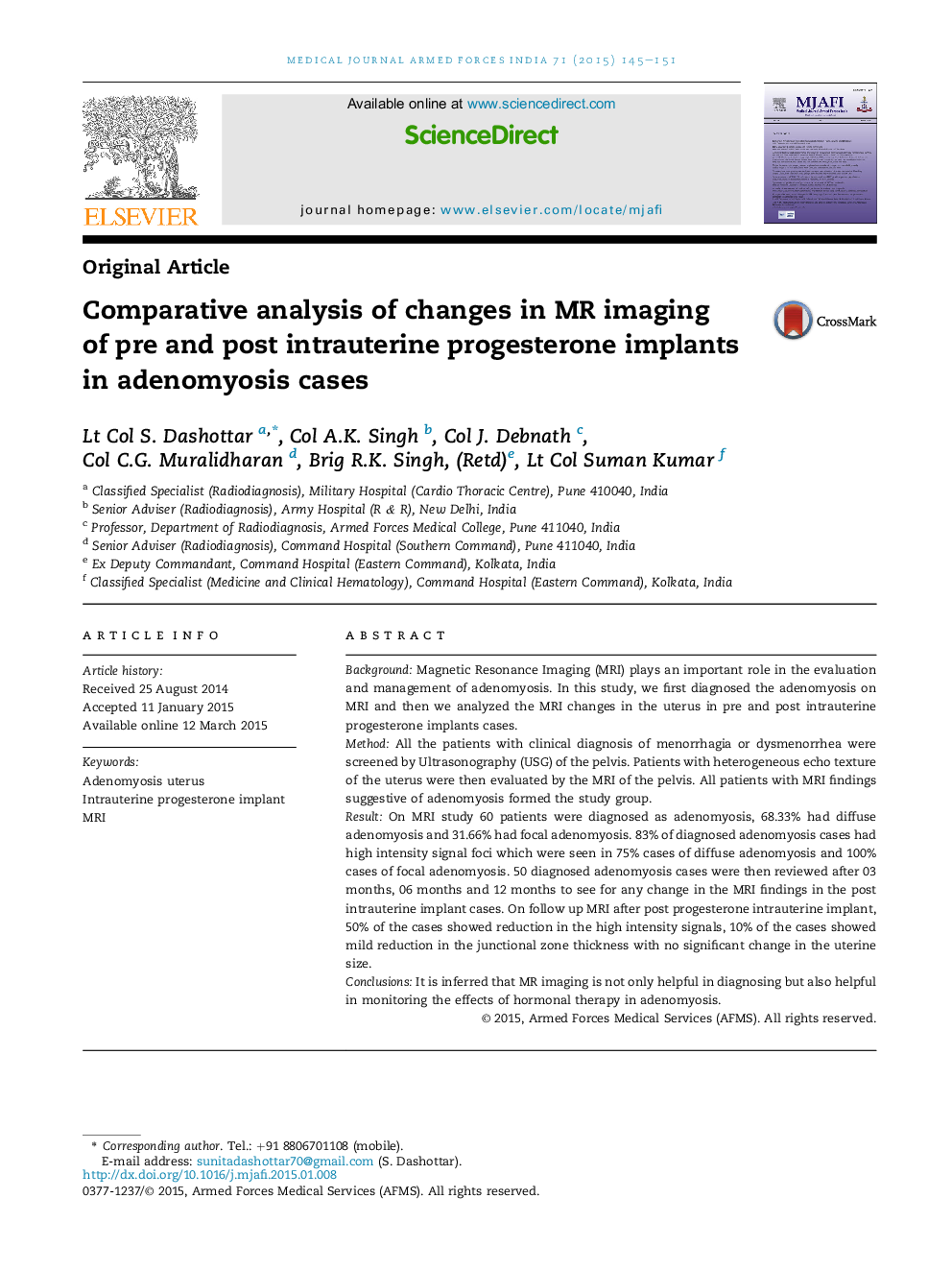| Article ID | Journal | Published Year | Pages | File Type |
|---|---|---|---|---|
| 3160975 | Medical Journal Armed Forces India | 2015 | 7 Pages |
BackgroundMagnetic Resonance Imaging (MRI) plays an important role in the evaluation and management of adenomyosis. In this study, we first diagnosed the adenomyosis on MRI and then we analyzed the MRI changes in the uterus in pre and post intrauterine progesterone implants cases.MethodAll the patients with clinical diagnosis of menorrhagia or dysmenorrhea were screened by Ultrasonography (USG) of the pelvis. Patients with heterogeneous echo texture of the uterus were then evaluated by the MRI of the pelvis. All patients with MRI findings suggestive of adenomyosis formed the study group.ResultOn MRI study 60 patients were diagnosed as adenomyosis, 68.33% had diffuse adenomyosis and 31.66% had focal adenomyosis. 83% of diagnosed adenomyosis cases had high intensity signal foci which were seen in 75% cases of diffuse adenomyosis and 100% cases of focal adenomyosis. 50 diagnosed adenomyosis cases were then reviewed after 03 months, 06 months and 12 months to see for any change in the MRI findings in the post intrauterine implant cases. On follow up MRI after post progesterone intrauterine implant, 50% of the cases showed reduction in the high intensity signals, 10% of the cases showed mild reduction in the junctional zone thickness with no significant change in the uterine size.ConclusionsIt is inferred that MR imaging is not only helpful in diagnosing but also helpful in monitoring the effects of hormonal therapy in adenomyosis.
